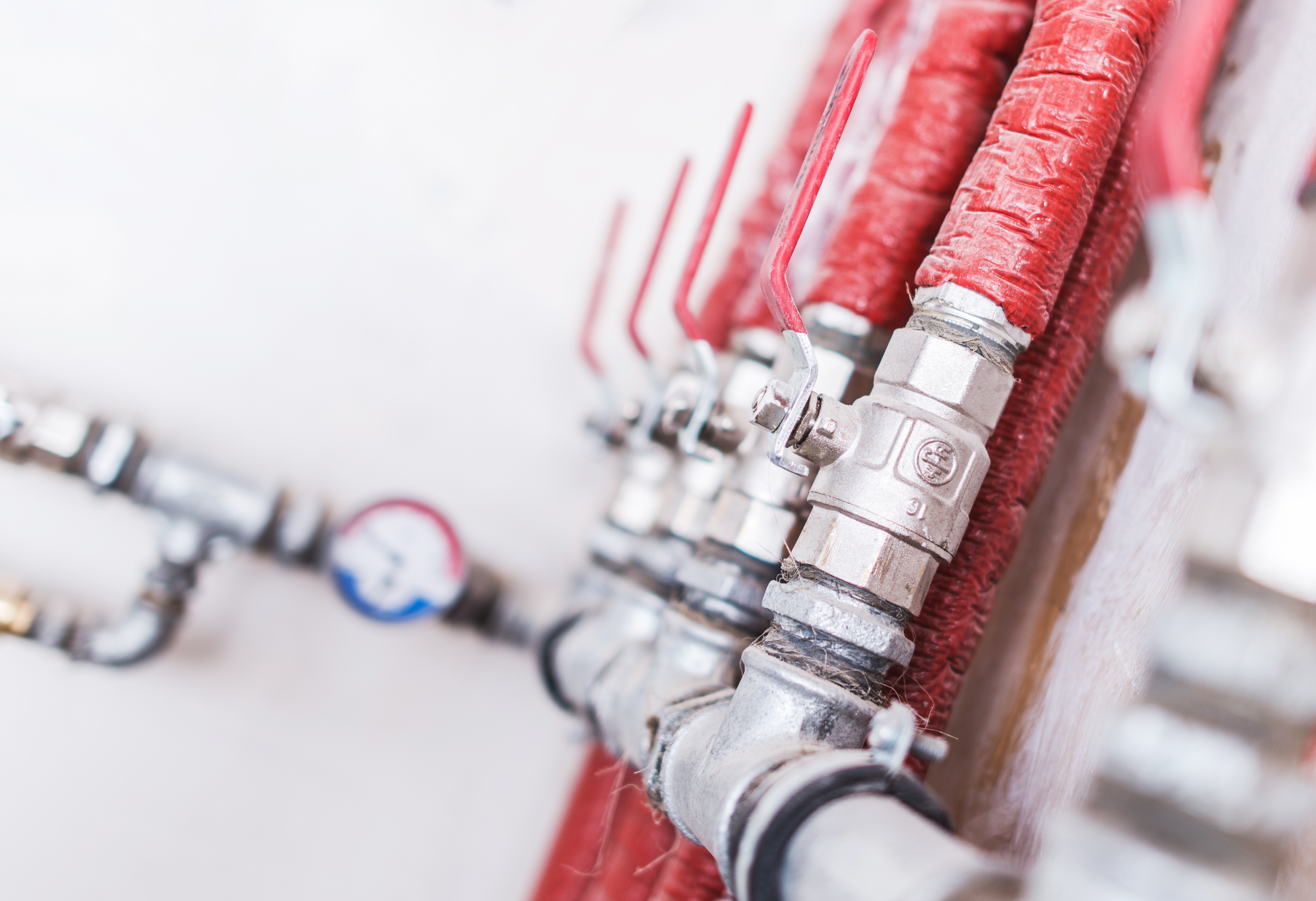What is the cracking pressure of a check valve?
Posted by Russ Bailey on Jan 11th 2021
Featured image created by fanjianhua - www.freepik.com
Check valves, regardless of the individual design, serve the specific purpose of permitting the flow of the service medium in one direction while intentionally preventing, or at least limiting, the flow of said medium in the reverse direction. Whether an inline check valve, wafer check valve, swing check valve or lift check valve, each version will necessarily have a dynamic element, whether disc, door, flapper, or ball, whose movement directly corresponds to the opening or closing of the subject flow path.
Depending upon the specific type of check valve under consideration, gravity or spring force can play a role in keeping this dynamic element closed against the valve seat when the upstream pressure or flow in the desired direction proves insufficient to push or lift the disc, door, flapper, or ball into the open position.
Since the flow of the medium in the desired direction in every check valve necessarily faces some level of resistant force, whether gravity, spring force, or inertia, helping the valve stay closed, the service medium must exert a sufficient opposing force, in the form of upstream pressure, in order to overcome the valve’s resistance to opening and allow the flow of the service medium to proceed in the intended direction.
The precise value of the upstream pressure at which a check valve permits a minimum, detectable flow of the service medium through the valve gives rise to the term cracking pressure, illustrating the point at which said valve “cracks” open.
Factors influencing cracking pressure
From the materials of construction of a swing check valve to the spring rate of a piston check, a multitude of design considerations can potentially influence the specific cracking pressure of a given check valve. Some of those factors remain an inherent characteristic of the particular design, while others arise from the circumstances surrounding the valve’s use.
In many cases, a smaller check valve will have a notably lower cracking pressure than a larger version of a similar design. Typically, as the size of the valve increases, the size and mass of the aforementioned dynamic element also increase. With a more massive disc, door, flapper, or ball, that the process must displace in order to permit a detectable flow, the minimum pressure required to achieve that displacement typically proves elevated as well. Likewise, the required installation orientation of the valve in service can also influence the cracking pressure.
Take the example of check valves that prove suitable for both horizontal and vertical installations. The role that gravity plays in opposing the movement of the dynamic element of the valve necessarily changes as the orientation changes, as a result, the positioning of the said valve can potentially influence the cracking pressure required to permit flow.
While the designed cracking pressure of the valve adheres to an initially established value, within certain tolerances, extended or harsh service can also conceivably impact cracking pressure. Wear on the seats, galling on wetted surfaces, fatigue on a spring, deterioration of elastomers owing to caustic or rough service, and particulate contamination in the line offer just several examples of concerns that can certainly erode the predictability of the value of the upstream pressure at which the valve will allow a minimum detectable flow.
In some cases, this may decrease the cracking pressure as flow leaks past the seats even at nominal pressures. In other instances, the compromised valve may prove more resistant to opening thus increasing the cracking pressure. Neither condition represents an ideal situation and serves instead as reminders of the virtues of routine maintenance and replacement.

Water photo created by welcomia - www.freepik.com
Minimizing cracking pressure
Many check valve designs seek to minimize the value of the cracking pressure to reduce the valve’s opposition to flow in the permissible direction, thus optimizing the valve’s utility on low flow or low-pressure applications.
Certain valves that may offer a particularly low cracking pressure may also require some measure of backflow in order for the valve to reseat and close. Additionally, some of these low cracking pressure designs may not offer a bubble-tight shut-off, In other words, while they may generally restrict flow in the reverse direction when sitting in the closed position, the design may tolerate some volume of permissible leakage from the downstream side of the valve back through the seat to the upstream side.
Given the frequent employment of check valves on water and air applications, one must consider this potential for contamination when selecting the appropriate valve design and inherent shut-off class. Selecting a valve with a slightly higher cracking pressure but that offers positive shut-off in the reverse direction may prove more ideal.
Manipulating cracking pressure
Though minimizing the cracking pressure proves fruitful in certain circumstances, like those low- flow and low-pressure applications previously discussed, the class of valves known as restrictor checks typically elevates the cracking pressure to achieve specific values.
By utilizing interchangeable springs within the same inline check valve design, restrictor checks can purposefully manipulate the cracking pressure of the valve. This proves particularly useful in simple relief applications where the check valve principally serves to bleed excess media only when the upstream process exceeds a specific pressure threshold as opposed to conventional applications where the valve primarily controls process flow direction.
A restrictor check can typically offer a smaller length of stroke to achieve full lift and lower available cracking pressures than that of the typically coded safety relief valve. Importantly, though they may crack at specific pressures, restrictor checks do not take the place of safety relief valves. The design of the restrictor check necessarily anticipates a high cycle life where the valve will open and close frequently to address minor excesses of upstream pressure.
Alternatively, a safety relief valve will open only under emergency conditions to specifically accommodate the relief of a calculated capacity of the service medium. The intended use of a safety relief valve would not involve anticipated routine cycling to mitigate minor spikes in upstream process pressure, a task better left to the likes of back pressure regulators and the aforementioned restrictor checks.
In need of assistance in selecting a check valve with a specific cracking pressure? The experts at ValveMan have the knowledge and experience to help. Shop ValveMan.com today!
Related Products
[[3096, 2420, 104, 192]]

 888-825-8800
888-825-8800









